Explore the lunar cycle with our free Moon Phases Worksheet PDF, designed for visual learners and educators. Perfect for understanding the lunar cycle’s eight distinct phases.
This interactive resource simplifies complex concepts, making it ideal for classrooms or homeschooling. Featuring diagrams, activities, and exercises, it fosters curiosity and learning about the moon’s phases.
1.1 Overview of the Lunar Cycle
The lunar cycle, lasting approximately 28 days, is the period during which the Moon completes one full orbit around Earth. During this time, the Moon’s appearance changes due to the varying amounts of sunlight reflecting off its surface. The cycle begins with the New Moon, where the Moon is positioned between Earth and the Sun, making it invisible from our planet. As the Moon moves through its orbit, different portions of its illuminated side become visible, progressing through phases like Waxing Crescent, First Quarter, Full Moon, and eventually returning to the New Moon phase.
This cycle is fundamental for understanding the Moon’s behavior and is beautifully illustrated in the Moon Phases Worksheet PDF, helping learners track and visualize these changes.
1.2 Importance of Understanding Moon Phases
Understanding moon phases is essential for grasping fundamental concepts in astronomy and Earth sciences. It enhances STEM knowledge and fosters critical thinking. The lunar cycle influences tides, eclipses, and Earth’s natural rhythms, making it vital for comprehending our planet’s interconnected systems.
Learners gain insights into celestial mechanics and the Moon’s role in shaping life on Earth. This knowledge also connects cultural and historical practices, enriching one’s appreciation of the universe. The Moon Phases Worksheet PDF serves as a valuable tool, simplifying complex ideas and promoting a deeper understanding of our cosmic environment.
1.3 Benefits of Using a Moon Phases Worksheet
A Moon Phases Worksheet PDF offers an engaging and interactive way to learn about the lunar cycle. It provides clear visuals and structured activities, making complex concepts accessible to students. The worksheet encourages hands-on learning, helping users draw and label phases, fostering a deeper understanding of the moon’s transformations. It also supports visual and kinesthetic learners, catering to diverse learning styles. Additionally, it serves as a valuable resource for educators, offering lesson planning tools and assessment opportunities. The worksheet aligns with educational standards, ensuring comprehensive and age-appropriate learning experiences for grades 4–8. It is a practical and effective tool for astronomy education.

The Eight Phases of the Moon
Discover the eight phases of the Moon, from New Moon to Full Moon and back. These phases occur due to the Moon’s orbit and sunlight reflection.
2.1 New Moon
The New Moon marks the beginning of the lunar cycle. It occurs when the Moon is positioned between the Sun and Earth, making it invisible from our planet. During this phase, the side of the Moon facing Earth is completely unilluminated by the Sun. The New Moon is a significant astronomical event, often associated with new beginnings and renewal. It typically lasts about 1-2 days and is a time when the Moon’s brightness is at its lowest. This phase is crucial for planning lunar observations and understanding the Moon’s orbital patterns. Its cultural and scientific significance makes it a key topic in lunar studies.
2.2 Waxing Crescent
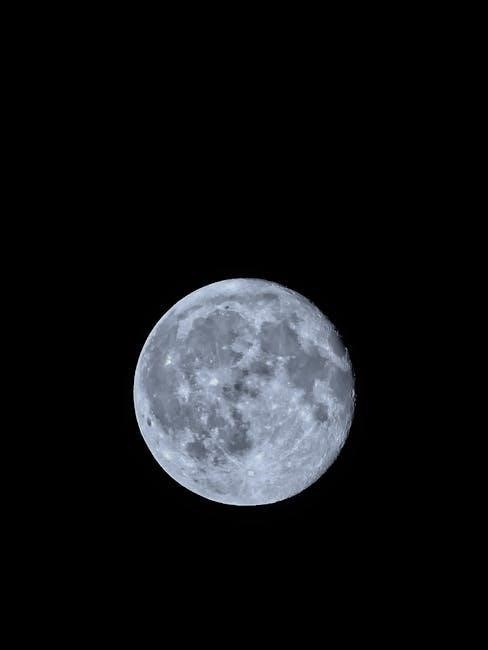
The Waxing Crescent is the second phase of the Moon, occurring after the New Moon. During this phase, the Moon appears to grow larger and brighter as more of its illuminated side becomes visible from Earth. The term “waxing” refers to the increasing brightness of the Moon as it moves away from the New Moon. The Waxing Crescent phase typically lasts for a few days, offering stunning views of the Moon’s surface. It is a popular time for lunar observations and photography, as the Moon’s features are sharply defined by the contrast between light and dark. This phase is also culturally significant in many traditions, symbolizing growth and progress.
2.3 First Quarter
The First Quarter marks the Moon’s transition from the Waxing Crescent phase, occurring when the Moon is half-illuminated from our perspective on Earth. This phase is called “First Quarter” because it is the first major milestone after the New Moon. The Moon appears as a bright, clear half-circle in the sky, making it easy to observe. During this phase, the Moon’s surface facing Earth is fully lit by the Sun, creating a striking visual contrast. The First Quarter is a significant phase for studying lunar features and understanding tidal patterns. It is also a popular time for astronomical observations and educational activities.
2.4 Full Moon
The Full Moon occurs when the entire face of the Moon illuminated by the Sun is visible from Earth. This phase happens when the Moon is directly opposite the Sun in its orbit. The Full Moon is the brightest phase, making it a popular time for astronomical observations. During this phase, the Moon’s surface is fully lit, allowing observers to see a wide range of lunar features, such as craters and maria, with great clarity. The Full Moon has cultural and scientific significance, often being a key topic in lunar studies and educational activities about the Moon’s phases.
2.5 Waning Gibbous
The Waning Gibbous phase occurs after the Full Moon, as the Moon begins to appear smaller in the sky. During this phase, more than half of the Moon’s illuminated surface is still visible, but it gradually decreases as the Moon moves away from the Full Moon position. The term “Waning” refers to the Moon’s brightness decreasing, while “Gibbous” describes its shape, which appears more than half but not fully illuminated. This phase is an excellent time for observing lunar surface features, as the light reflects off the Moon’s terrain, creating detailed shadows and highlights for study and exploration in educational worksheets.
2.6 Last Quarter
The Last Quarter phase, also known as the Third Quarter, occurs when the Moon is half-illuminated from the right side. This phase happens approximately 21 days after the New Moon and marks the Moon’s position at 270 degrees from the Sun. The Moon is now in the western sky, visible after midnight and before sunrise. During this phase, the illuminated portion appears on the right side, creating a striking visual contrast. The Last Quarter is a critical point in the lunar cycle, as it signals the Moon’s transition toward the Waning Crescent phase. This phase is often used in educational worksheets to help learners understand the Moon’s orbital progression and its resulting illumination patterns.
2.7 Waning Crescent
The Waning Crescent phase is the final stage of the lunar cycle before the New Moon. During this phase, only a small sliver of the Moon’s illuminated surface is visible from Earth. The Moon appears in the eastern sky shortly before sunrise, growing thinner each day as it approaches the New Moon. This phase signifies the Moon’s closest approach to the Sun, making it less visible in the sky. The Waning Crescent is often referred to as the “old moon” and is a critical visual aid in educational moon phases worksheets to help learners understand the completion of the lunar cycle.
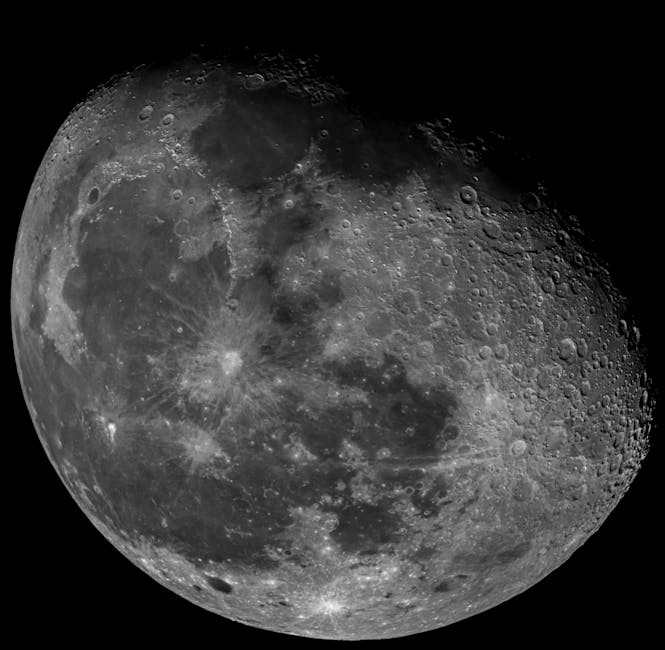
Educational Uses of the Moon Phases Worksheet
The Moon Phases Worksheet PDF is a valuable educational tool for teaching students about the lunar cycle. It enhances learning experiences by providing interactive and visual content.
Students can track the Moon’s phases, aligning with STEM concepts and fostering curiosity about astronomy. The worksheet is ideal for grades 4–8, offering engaging activities for classroom or homeschool use.
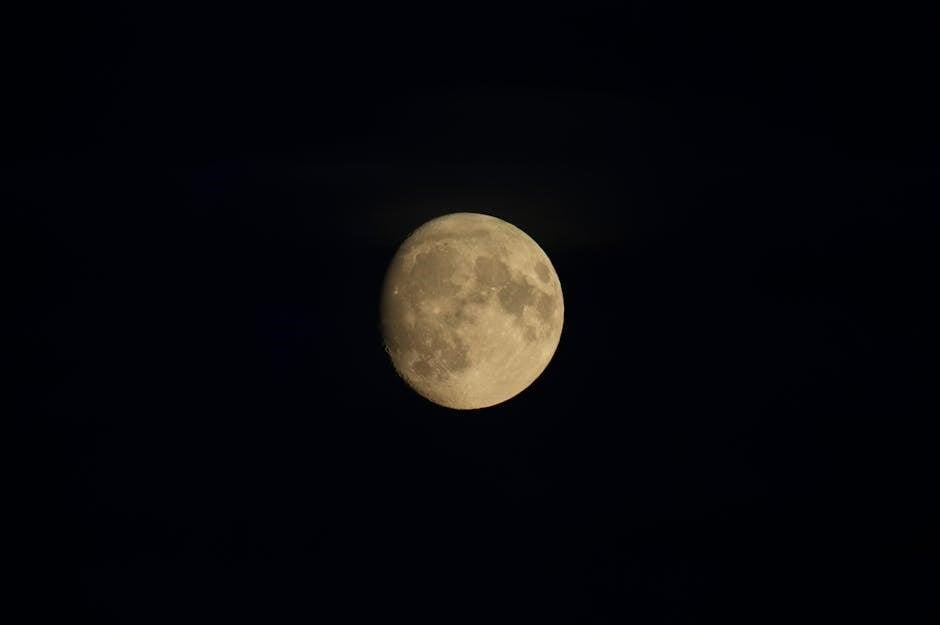
3.1 Grade-Specific Learning (Grade 4–8)
The Moon Phases Worksheet PDF is tailored for students in grades 4–8, offering age-appropriate activities to enhance their understanding of the lunar cycle.
Interactive exercises, such as drawing and labeling the Moon’s phases, cater to visual and kinesthetic learners, making complex concepts accessible and engaging for young students.
The worksheet aligns with STEM education goals, encouraging critical thinking and scientific inquiry. It provides a hands-on approach to learning, making it an excellent resource for classrooms or homeschooling environments.
Students can track the Moon’s transformations over time, fostering curiosity and a deeper appreciation for astronomy and Earth’s natural satellite.
3.2 Interactive Learning Activities
The Moon Phases Worksheet PDF offers engaging activities to make learning interactive and fun. Students can draw and label the eight phases of the Moon, reinforcing their understanding through visual representation.
Matching games and sequencing exercises help students connect the phases in chronological order, while fill-in-the-blank questions test their knowledge. The worksheet also includes observation sheets for tracking the Moon’s appearance over time.
These hands-on activities cater to different learning styles, making the lunar cycle accessible and memorable for young learners. Interactive elements encourage participation and curiosity, creating a dynamic learning experience.
3.3 Aligning with STEM Education
The Moon Phases Worksheet PDF seamlessly integrates into STEM education by promoting scientific inquiry and critical thinking. It encourages students to explore the Moon’s orbital mechanics and the physical processes behind phase changes.
Through hands-on activities, learners develop problem-solving skills by analyzing the Moon’s cycle, understanding the role of gravity, and connecting lunar phases to tides and eclipses. The worksheet also aligns with astronomy and physics curricula, fostering a deeper appreciation for space science.
By incorporating visual models and real-world applications, the worksheet enhances STEM learning, preparing students to explore complex astronomical concepts in a structured and engaging manner.
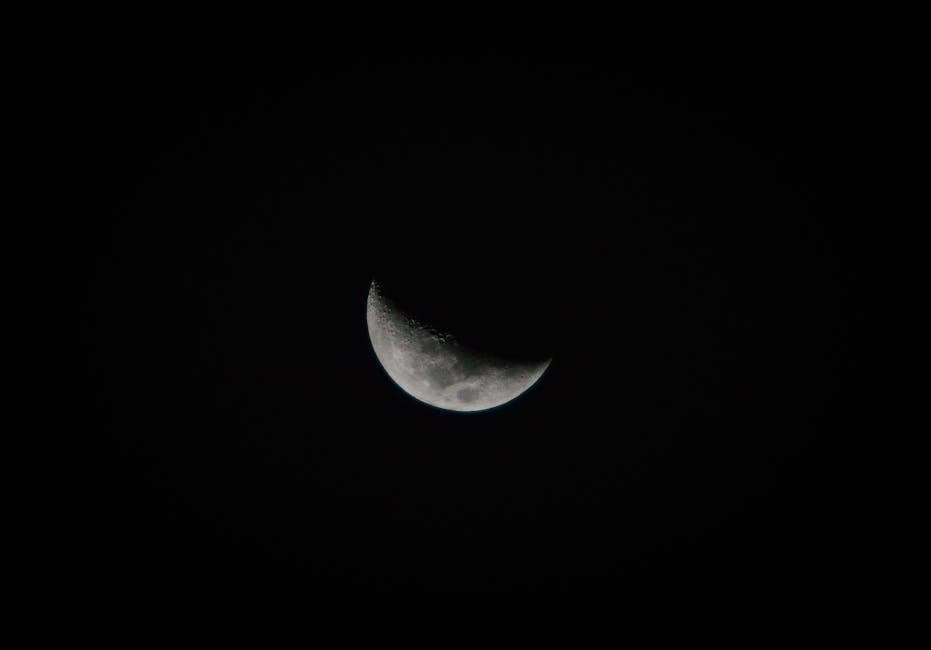
How to Use the Moon Phases Worksheet PDF
Download and print the Moon Phases Worksheet PDF for an engaging way to teach lunar cycles. Ideal for grades 4–8, it includes diagrams and step-by-step instructions.
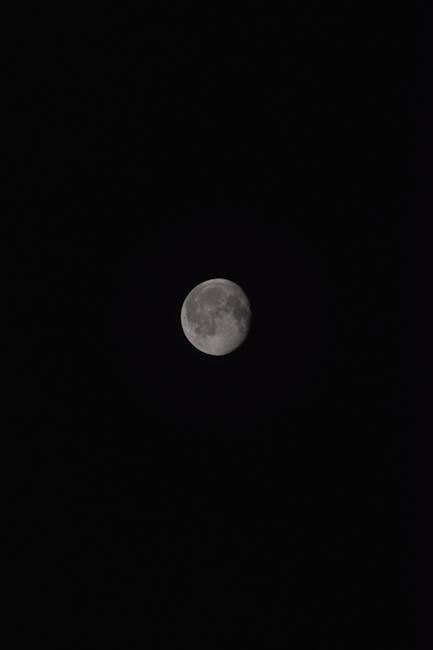
4.1 Downloading and Printing the Worksheet
The Moon Phases Worksheet PDF is easily accessible online. Simply visit a trusted educational website, locate the PDF file, and download it to your device. Ensure your printer is compatible with PDF formats for high-quality output.
Print the worksheet on standard paper size (A4 or letter) to maintain clarity. Adjust printer settings if needed to ensure diagrams and text are crisp. This ensures students can easily identify and label the moon phases accurately.
4.2 Step-by-Step Instructions for Completing the Worksheet
Begin by examining the diagram to understand the visual representations of each moon phase.
Read each phase’s description thoroughly to grasp the characteristics of New Moon, Waxing Crescent, First Quarter, Full Moon, Waning Gibbous, Last Quarter, and Waning Crescent.
Match each phase name with its corresponding image in the diagram, ensuring accuracy.
Use the provided lunar cycle timeline to sequence the phases correctly, understanding their order and duration.
Fill in the dates or days of the month corresponding to each phase based on the sequence.
Answer the reflective questions to reinforce your understanding of the lunar cycle.
Review your work to ensure all sections are complete and accurate.
Consider using additional resources or observing the moon to enhance learning.
This process aids in a comprehensive understanding of the moon’s phases.

4.3 Incorporating Visual Aids and Diagrams
Visual aids and diagrams are essential components of the Moon Phases Worksheet PDF, enhancing learning through interactive and engaging methods. The worksheet includes detailed diagrams of the lunar cycle, showcasing the progression from New Moon to Full Moon and back. These visuals help learners identify and label each phase accurately. Additionally, the PDF provides space for drawing and sketching, allowing users to create their own representations of the moon’s phases; Diagrams also illustrate the moon’s orbit and its position relative to the Earth and Sun, making complex concepts more accessible. These tools align with the worksheet’s structured activities, fostering a deeper understanding of lunar phases.
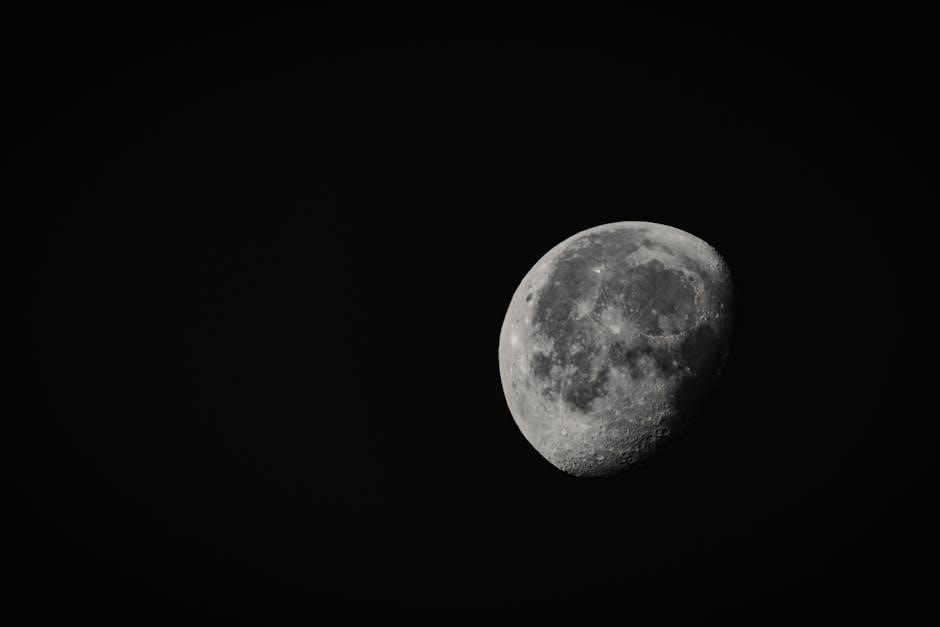
Additional Resources for Moon Phase Learning
Enhance learning with moon observation sheets, lunar cycle models, and free printable worksheets; These resources provide interactive activities and visual aids for a comprehensive understanding of moon phases.
5.1 Moon Observation Sheets
Moon observation sheets are a valuable tool for tracking the lunar cycle. They allow learners to record the moon’s appearance, phase, and changes over time, fostering hands-on engagement with astronomy.
These sheets often include space for noting the date, time, and a sketch of the moon’s phase. They are ideal for classrooms or individual study, helping students develop observational skills and a deeper understanding of lunar patterns. By documenting their findings, learners can visualize the moon’s transformation and gain insights into its cyclical nature. This resource is especially beneficial for young astronomers and educators seeking interactive ways to teach moon phases.
5.2 Lunar Cycle Models and Activities
Lunar cycle models and activities provide interactive ways to explore the moon’s phases. These resources include hands-on projects like creating 3D models or conducting simulations of the moon’s orbit.
Students can build physical representations of the lunar cycle, such as paper plate models or digital animations, to visualize how the moon’s appearance changes over time. Activities like these enhance learning by making abstract concepts tangible. They also encourage critical thinking and creativity, helping learners grasp the relationship between the moon, Earth, and sun. Such engaging methods make astronomy accessible and fun, especially for younger students or those new to studying the lunar cycle.
5.3 Free Printable Worksheets for Further Practice
Enhance learning with free printable worksheets designed to deepen understanding of the moon’s phases. These resources allow students to name, draw, and order the phases, reinforcing key concepts through interactive exercises. Perfect for grades 4–8, they align with educational standards and cater to diverse learning styles. Worksheets often include diagrams, labeling activities, and short-answer questions, making them ideal for classroom use or independent study. They provide a fun and engaging way to practice identifying and sequencing the lunar cycle, ensuring a solid foundation for further astronomy studies. These printable sheets are a valuable tool for educators and learners alike, promoting hands-on exploration and retention of moon phase knowledge.
The Moon Phases Worksheet PDF is a comprehensive tool for understanding the lunar cycle, offering engaging activities and visual aids to simplify complex concepts. Encouraging curiosity and exploration, it provides a solid foundation for further astronomy studies.
6.1 Recap of Key Concepts
Understanding the lunar cycle involves recognizing the eight distinct moon phases, from the New Moon to the Waning Crescent. Each phase results from the moon’s position relative to the sun and Earth, causing variations in visible illumination. The Moon Phases Worksheet PDF simplifies these concepts through diagrams and activities, making it accessible for learners. By exploring the lunar cycle’s 28-day orbit, students gain insights into the causes of phase changes and eclipses. This resource aligns with STEM education, fostering curiosity and practical understanding of astronomy. The worksheet encourages interactive learning, helping users track and name each phase accurately, while reinforcing key astronomical principles.
6.2 Encouragement for Continued Exploration
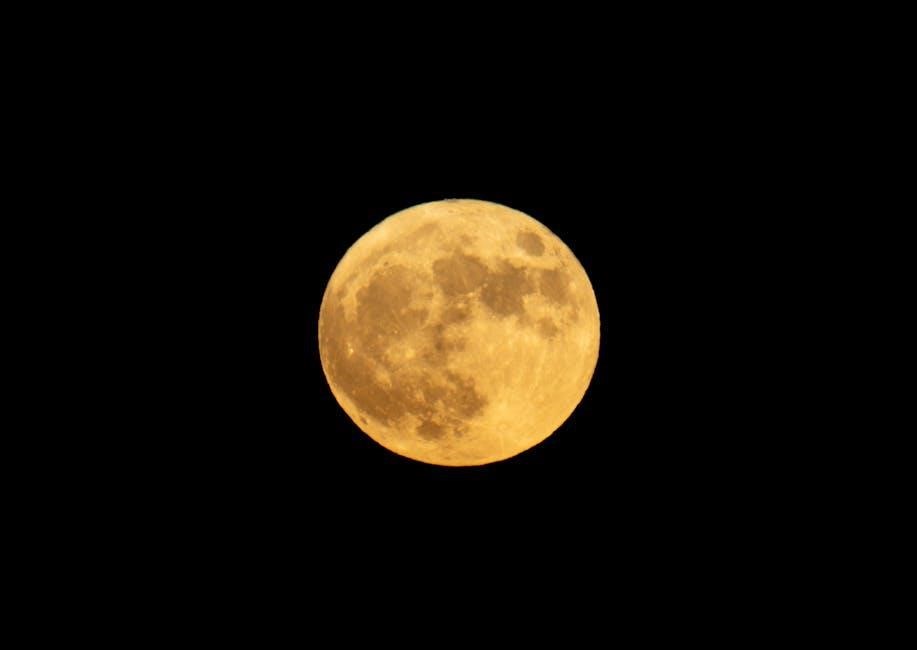
Exploring the moon phases is a gateway to understanding the wonders of astronomy; Encourage learners to continue discovering the lunar cycle by observing the moon regularly and using the worksheet as a guide. Additional resources like moon observation sheets and STEM activities can deepen their knowledge. Foster curiosity by discussing how the moon’s phases impact tides and eclipses. Motivate learners to create their own lunar cycle models or participate in astronomy clubs. The study of the moon is a lifelong journey, and consistent exploration will reveal the vast mysteries of our celestial neighbor. Keep looking up and learning!
